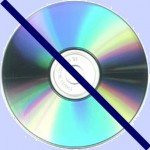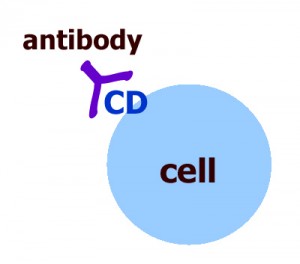Defining a Cluster of Differentiation, or CD
One of the goals of this blog is to introduce readers to some of the language of medicine. As much as jargon is sometimes unnecessary, sometimes the specificity and detail in medical terms aids precision.
So what is a cluster of differentiation, or CD?
In medical practice, the two-letter acronym specifies a molecule, or antigen, usually on a cell’s surface. In 1982, an international group of immunologists got together for the First International Workshop on Human Leukocyte Differentiation Antigens. The initial focus was on leukocyte (white blood cell) molecules. The goal was to agree on definitions of receptors and other complex proteins to which monoclonal antibodies bind, so that scientists could communicate more effectively.
A few examples of CDs about which you might be curious:
CD1 – the first-named CD; this complex glycoprotein is expressed in immature T cells, some B cells and other, specialized immune cells in the skin; there are several variants (CD1a, -b, -c…) encoded by genes on human chromosome 1.
CD4 – a molecule on a mature “helper” T cell surface; T lymphocytes with CD4 diminish in people with untreated HIV disease.
CD20 – a molecule at the surface of immature B lymphocytes that binds Rituxan, an antibody used to treat some forms of lymphoma, leukemia and immune disorders.
In this schematic, an antibody recognizes a specific molecule, or cluster of differentiation, at a cell surface.
The CDs were named (i.e. numbered) not necessarily by the order of discovery, but by the order of their being deemed as bona fide CDs by HLA Workshop participants. There’s a pretty good, albeit technical, definition in FEBS Letters, from 2009:
Cluster of differentiation (CD) antigens are defined when a surface molecule found on some members of a standard panel of human cells reacts with at least one novel antibody, and there is good accompanying molecular data.
Perhaps the best way to think about CDs is that they’re unique structures, usually at a cell’s surface, to which specific antibodies bind. By knowing the CDs, and by examining which antibodies bind to cells in a patient’s tumor specimen, pathologists can distinguish among cancer types. Another use is in the clinic, when oncologists give an antibody, like Campath – which binds CD52, the responsiveness might depend on whether the malignant cells bear the CD target.
Still, I haven’t come across an official (such as NIH), open-source and complete database for all the CDs. Most can be found at the Human Cell Differentiation Molecules website, and information gleaned through PubMed using the MeSH browser or a straight literature search.
Wikipedia is disappointing on this topic; the list thins out as the CD numbers go higher, and the external references are few. To my astonishment, I found a related page on Facebook. Neither makes the grade.
Where should patients get information about these kinds of things? Or doctors, for that matter?
—

So, what exactly does the word “cluster” (in Cluster of Differentiation) refer to?
What is “clustered”?
At first I though it would be the proteins on the cell’s surface, e.g., that all CD4’s are there in groups (or clusters) but this is not the case; they are rather spread over the entire cell surface.
Hi Tom,
I think ‘cluster’ refers to a cluster analysis – a statistical method for analyzing data. It’s how the immunologists who first identified distinct antigens on cells sorted them, based on the specificity and patterns of antibodies binding (before most CDs were named/numbered).
From the first link in this post to the First International Workshop on Human Leukocyte Differentiation Antigens, the authors explain: “… cluster analysis of the matrix of distances between all pairs of antibodies and algorithmic computation permitted the definition of groups of antibodies that were similar, and those that were clearly different, on each type of target cell….”
Hope this helps.